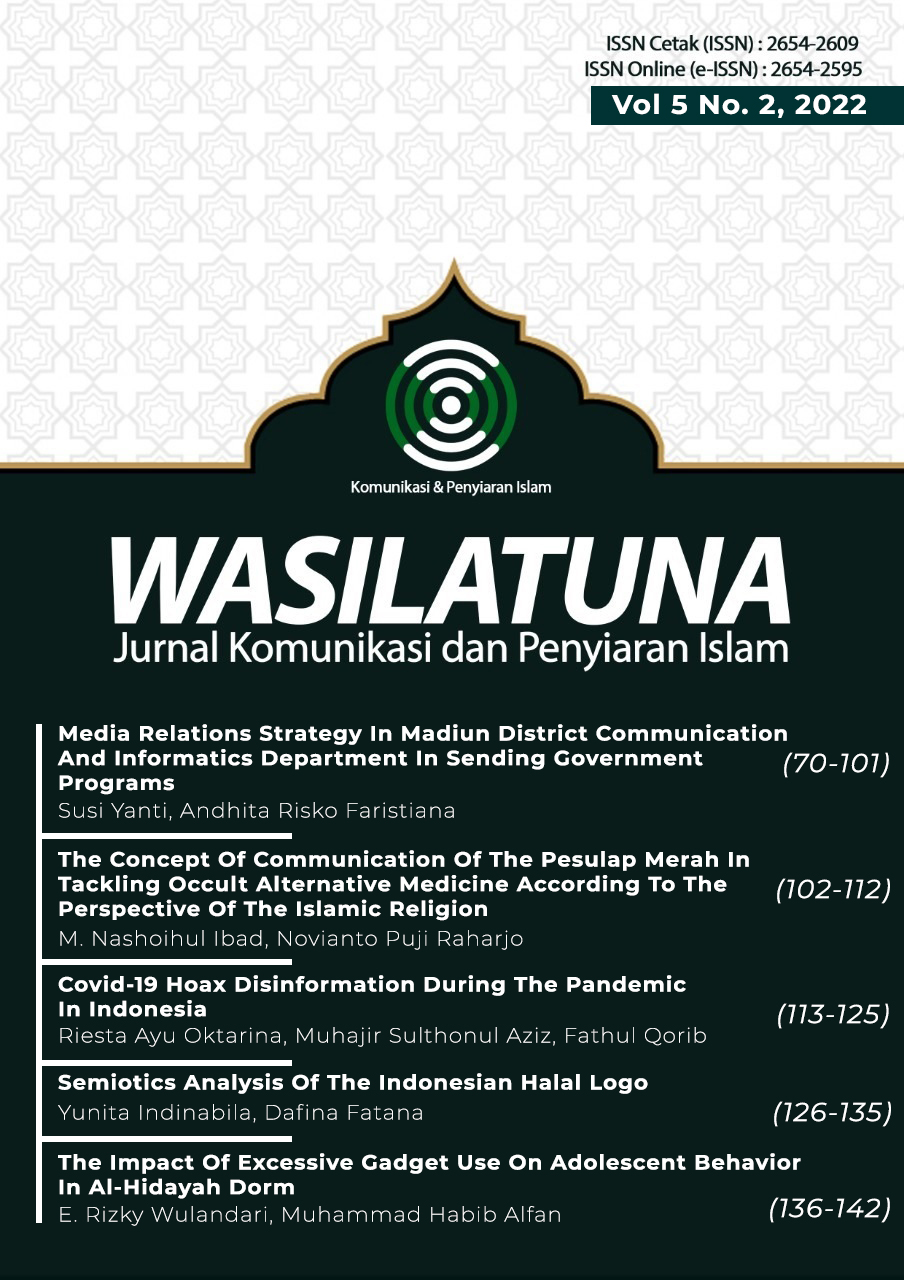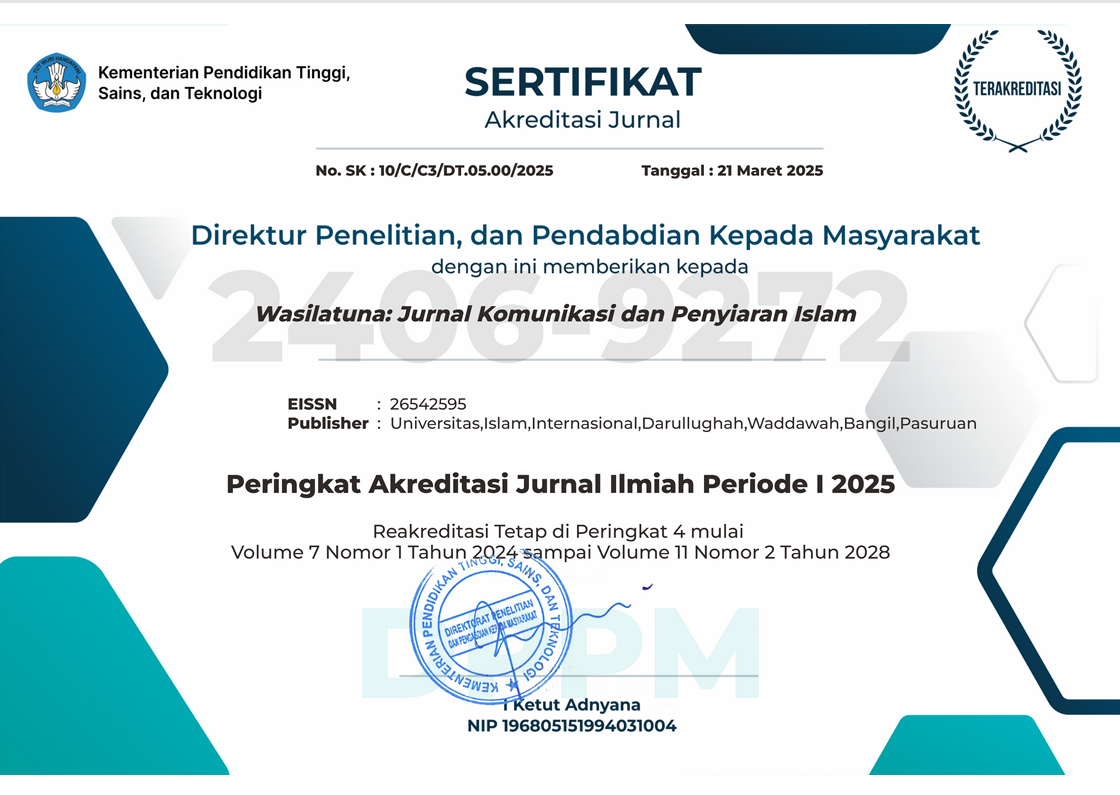SEMIOTICS ANALYSIS OF THE INDONESIAN HALAL LOGO (STUDY OF ROLAND BARTHES ANALYSIS OF SEMIOTICS)
DOI:
https://doi.org/10.38073/wasilatuna.v5i2.779Keywords:
logo, semiotics, roland barthesAbstract
The Presence of Law no. 33 of 2014 concerning Halal Product Assurance mandated by Badan Penyelenggara Jaminan Produk Halal (BPJPH) has an impact on changing the halal logo in Indonesia. Now the Indonesian halal logo consists of a logogram and logotype. Using semiotic analysis from Roland Barthes, researchers try to examine the signs, connotations, and myths on the Indonesian halal logo.
The use of kufi calligraphy in logotypes is inseparable from its history, that kufi khat has been used since the time of Rasulullah SAW. Furthermore, in its application, logogram and logotype cannot be separated.
The researcher analyzed the use of white as the background in the logo, representing that BPJPH wants to show a new beginning based on the values of purity, sincerity, simplicity, and independence. The purple color in the logogram and logotype is believed to represent faith, piety, and high imagination. Historically, purple has represented courage. Apart from purple, this logo also has turquoise as its secondary color. Toska is considered to represent wisdom, calm, and stability.
Downloads
Downloads
Published
Issue
Section
License
Copyright (c) 2022 Yunita Indinabila

This work is licensed under a Creative Commons Attribution 4.0 International License.








